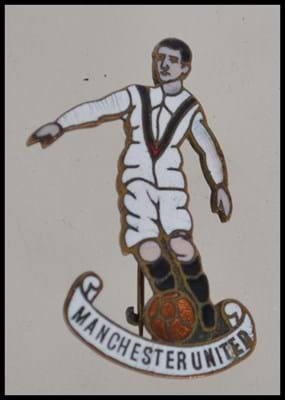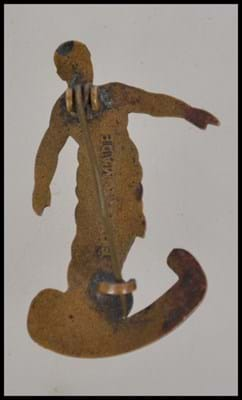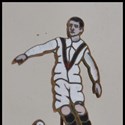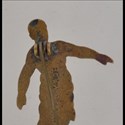The price paid at East Bristol Auctions on February 16 also clinches it: £1100 (plus a 21% buyer’s premium) against an estimate of £30-50.
We are talking about a 3.5cm high rare enamel pin badge showing a player for the Old Trafford side, and in the field of sports memorabilia ‘Manchester United’ and ‘early’ will pretty much guarantee interest. If it involved very early FA Cup tournaments it would tick even more boxes in this market.
East Bristol auctioneer Andrew Stowe says: “It was genuinely pulled from the bottom of a box from a local house. Had it not been for us being quite keen-eyed it would’ve remained in the house.”
And despite the usual jibes from non-Man Utd fans that most of their fans live south of Watford, it is heading back to the north-west.
“On sale day it surprised us all,” adds Stowe. “It was fiercely fought over by an online bidder in Russia and a phone bidder in Manchester. The gentleman on the phone was the winner at £1100, so it is off back home to Manchester.”
V hoped for victory
The unusual ‘V’ design was worn by United from 1922-27, dating this badge probably to then. The red ‘V’ decorated white shirts and shorts were worn with black socks, before United went back to the familiar ‘home’ red shirts adopted in 1902-03.
According to historicalkits.co.uk: “The period between the wars was an undistinguished one for United. Relegated and promoted with some regularity, the club twice experimented with alternative strips.”
There is speculation that the new kits were introduced by John Chapman when he moved from Airdrieonians to manage United (1921-26), but the all-white kit with red ‘V’ had once been worn when United beat Bristol City in the 1909 FA Cup Final - United's first FA Cup success.
In May 2012 Graham Budd Auctions set a record for any football programme at auction when an official one penny match card from that 1909 final between Manchester United and Bristol City sold for £20,000 – United’s first FA Cup success. That record now stands at £30,000 however, set a year later again at Graham Budd for the earliest-known surviving FA Cup final programme - Old Etonians v Blackburn Rovers, played at Kennington Oval on March 25, 1882.
And at that same saleroom in October 2015, a red ‘V’ shirt worn by Manchester United captain Charlie Roberts in the 1909 FA Cup final sold for £30,000 (plus 20.5% buyer’s premium).

A red ‘V’ shirt worn by worn by Manchester United captain Charlie Roberts in the 1909 FA Cup final, which sold for £30,000 at Graham Budd Auctions in October 2015,
Hoop dreams
For four seasons in the 1930s, Man Utd sported maroon and white hoops as an away kit (possibly making them the team depicted in CRW Nevinson’s atmospheric Any Wintry Afternoon in England painting now in Manchester Art Gallery, despite the artist’s self-confessed ignorance of the game).
Then, for one brief period, March-May 1934, Man Utd sported maroon and white hoops as a home kit.
historicalkits.co.uk states: “With relegation to Division Three (North) looming in March 1934, United adopted their ‘lucky’ hooped change shirt as first choice. Later histories describe these as ‘cherry and white’ but the club minutes of the time confirm that the FA had agreed to change the club's registered colours to ‘maroon and hoop’ (sic). This was worn throughout the following season before the more familiar plain red shirts were reinstated for 1935-36.”
Foreign legion
But any Man Utd haters can take heart: suitably for a team often derided now as merely a global ‘brand’, even in the 1920s this East Bristol enamel pin badge is marked on the back as ‘foreign made’…









